-
 +12 +1
+12 +1How a Lone Researcher Faced Down Millions of Army Ants on the March in Ecuador
Renowned entomologist Frank Nischk remembers when the determined insects tried to invade a field station. One afternoon, I was sitting on the veranda at the small research station in the reserve. I was alone, because my botanical colleagues were busy with their work in the forest. I was sorting and preparing my collection: dried crickets, the fruits of two weeks’ work in the cloud forest. Then I heard a swell of rustling and murmuring, and knew immediately what was moving toward me.
-
 +4 +1
+4 +1How ants find their way
Insects use a wide range of tools for orientation, including visual memory, smell, and counting steps. The tricky question is how they combine and compute different kinds of inputs, and whether their methods can help us understand more complex brains or create artificial ones. Michael Gross investigates. Bottom of the article, you will be able to find a simulator link for How ants find their way.
-
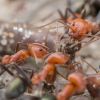 +16 +1
+16 +1‘Kingdom of the ant’: northern Australia boasts more than 5,000 species
‘It’s the global centre of diversity,’ says insect scientist who found 27 species of ant in two days in Kakadu national park.
-
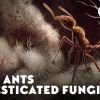 +12 +1
+12 +1When Ants Domesticated Fungi
While we’ve been farming for around 10,000 to 12,000 years, the ancestors of ants have been doing it for around 60 million years. So when, and how, and why did ants start … farming?
-
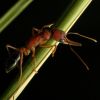 +15 +1
+15 +1The Incredible Shrinking And Growing Brains Of Indian Jumping Ants
New research on ants has shown a first in insects: the ability to shrink and then regrow their brains in a big way. It relates to how these particular ants, called Harpegnathos saltator, or the Indian jumping ant, reproduce.
-
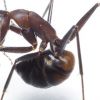 +21 +1
+21 +1Ants Slurp Their Own Butt Acid to Protect Themselves From Germs
Recently, a team of researchers noticed something odd about ants. Every time the insects swallowed food or water they would start cleaning the glands on their butt ends.
-
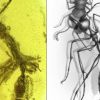 +13 +1
+13 +1Scientists discover amber tomb that shows a prehistoric "hell ant" killing its prey with bizarre jaws that look like the Grim Reaper's scythe
A "hell ant" some 99 million years ago used its scythe-like jaws to trap a baby roach for its next meal — but then the pair got stuck in sap and were preserved for scientists to discover centuries later.
-
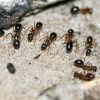 +13 +1
+13 +1It’s ‘nature’s sports drink’: Ants live off urine on dry Australian island
Wildlife ecologist Sophie Petit was camping on South Australia’s Kangaroo Island one night in 2016, when she noticed something unusual: sugar ants swarming a spot in the sand where she had urinated a couple of hours earlier. To her wonder, the ants came back, night after night, seeking more pee. Now, 3 years later, Petit has found that the insects crave the urine of people, kangaroos, and other animals, likely to survive the island’s nutrient-scarce environment. They even prefer it to sugar water.
-
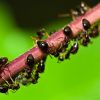 +8 +1
+8 +1Study: Ants are “immune” to traffic jams
Unlike self-interested humans, ants have a common goal: the colony's survival.
-
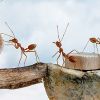 +18 +1
+18 +1Ants, Like People, Prefer Things for which They’ve Had to Work Hard
We tend to overvalue things for which we have worked hard. That hand-made cabinet is super special, even if it doesn’t quite close properly. This pattern, often termed “the IKEA effect,” can be explained by the fact that we dislike the idea that something we put effort into isn’t very good, by our increased emotional attachment to the product, or by other complex thought processes.
-
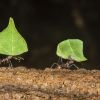 +12 +1
+12 +1Fungus-Farming Ants Might Hold the Secret to Fighting Drug-Resistant Microbes - D-brief
In 2017, a woman in Nevada died from a fairly common bacterial infection, Klebsiella pneumoniae. Her death wasn’t the product of medical oversight or inattention; rather, it came despite it. Her infection proved resistant to every antibiotic drug doctors threw against it, NPR reports. They ultimately exhausted 26 different drugs — the bacteria was resistant to every single one.
-
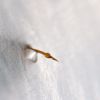 +4 +1
+4 +1Slow-motion video reveals how ants deliver their painful venom
Painful encounters with ants don’t stem from their bite; it’s their venom-delivering stingers. Now, in a video posted online this week, a researcher has recorded the first ever close-up look at how these stingers work.
-
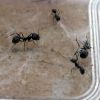 +8 +1
+8 +1Watch an ant rip apart a spiderweb to rescue a sibling
Desert harvester ants charge into danger and dismantle spider traps
-
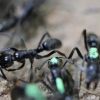 +19 +1
+19 +1'Paramedic' Ants Are the First to Rescue and Heal Their Wounded Comrades
Matabele ants nurse each other back to health after battle with a surprisingly high success rate, a new study finds.
-
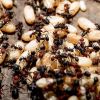 +33 +1
+33 +1An ant colony has memories that its individual members don’t have
Why your brain is like an ant colony: they both get wiser and more stable by using collective memory for learning
-
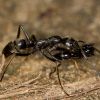 +15 +1
+15 +1On the Battlefield, Ants Treat Each Other's War Wounds
A species of warmongering sub-Saharan ant not only rescues its battle-wounded soldiers but also treats their injuries. This strikingly unusual behavior raises the survival rate for injured ants from a mere 20 percent to 90 percent, according to new research published Feb. 13 in the journal Proceedings of the Royal Society B.
-
 +13 +1
+13 +1High-speed video solves how Florida ants furnish their nests with their enemies’ bodies
The nests of Florida ants called Formica archboldi are adorned with the carcasses of their enemies — namely, the heads of other species known as trap-jaw ants. How Formica archboldi acquire these gruesome home accessories has perplexed scientists since the 1950s. But now, thanks to high-speed and time lapse videos, we have a better picture of this bizarre behavior.
-
 +35 +1
+35 +1How plants evolved to make ants their servants
Plants are boring. They just sit there photosynthesizing while animals have all the fun. Right? Not so much. Take a look at the interactions between ants and plants—plants have evolved features specifically to make them enticing to ants, like juicy nectar for the insects to eat and hollow thorns for them to take shelter in. In exchange, plants use ants to spread their seeds and even act as bodyguards.
-
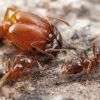 +13 +1
+13 +1The making of soldier ants
Pheidole soldier (left) and minor worker (right). Photo © Alex Wild, used by permission (https://www.alexanderwild.com/) Ants regulate the growth of seemingly ‘useless’ organ to make huge soldiers Scientists solve a problem that troubled Charles Darwin – the diversity in the size and scaling of worker ants. They identify mechanism underlying development of soldier ants & maintenance of balance among worker castes Crucial role played by seemingly unimportant rudimentary “organ” which appears transiently during the development of soldier ants Rudimentary “organs” are tissues that appear only...
-
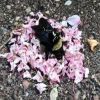 +16 +1
+16 +1Baffling Viral Video Shows Ants Carrying Flowers to a Dead Bee
It looks like something out of a sad fairy tale. Tiny ants are pulling over petals, making a pile, and on top rests a dead bumblebee. By Jacinta Bowler.
Submit a link
Start a discussion




















